Literature from the Netherlands and Flanders in Austria after 1945
Also in Austria the developments in literature from the Netherlands and Flanders were followed. But to this day, Austrian publishers have not set accents in their work with translations. In the field of children's and youth literature, however, Austrian publishers not only broke new ground but also laid the foundation for the success of Dutch and Flemish authors in the German-speaking world.
In this historical overview, reference is made primarily to titles published by Austrian publishers. However, works published by publishers who have or had a branch or registered office in Austria are also covered.
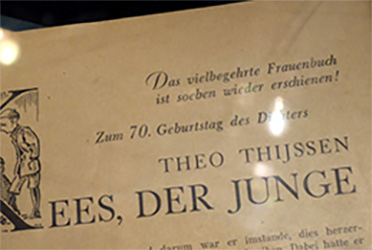
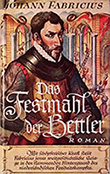
In the first years after the Second World War, Austrian publishers, like publishers in Germany, initially continued where they had left off with pre-war successes. Authors such as Stijn Streuvels and Felix Timmermans attracted attention again in Austria after 1945. But it was primarily leisure literature that was being translated. Authors such as Johan Fabricius, A.M. de Jong and Theo Thijssen were being published. With the 1935 translation of A.D. Hildebrand's Bolke der Bär [Bolke the Bear], the Deutscher Verlag für Jugend und Volk in Vienna (later Verlag für Jugend und Volk) laid the foundation for Hildebrand's success in Austria and later also in Germany. This translation started off the particular interest in children's and youth literature that has characterised Dutch-language literature in Austria to this day.
Theun de Vries

After 1945 Theun de Vries "quickly found an enthusiastic audience" (Anon., 1950). In 1949, the Wiener Volksbuchverlag published a re-edition of Anine Gerdeck-de Waals translation of Stiefmoeder aarde from 1938, Stiefmutter Erde (Büchergilde Gutenberg), and a year later the Schönbrunn publishing house in Vienna published Eva Schumann's translation of De Vries' novel Rembrandt. Eva Schumann had studied in Vienna and had emigrated to the Czech Republic in 1933. She also translated works by Willy Corsari, Top Naeff, Margo Scharten-Antink, Maarten Maartens, Vincent van Gogh (letters), Amanda van Hoogstraten-Schoch and eventually became one of the most important translators of the work of Jo van Ammers-Küller in the German language area. Her translation of Rembrandt became a bestseller in the GDR (10 editions!).
1950-1970
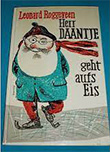
In this period, relatively many translations from Dutch were published in Austria, but with hardly any change regarding the selecton of the titles. Essentially Austria seemed to follow the developments in the rest of the German language area closely. Special attention was devoted to children's and youth literature. This applies in particular to the work of Leonard Roggeveen and Suze la Chapelle-Roobol.
Starting in 1954, a whole series of translations of the works of Godfried Bomans, who had made his debut in Switzerland in 1948, appeared in Austria. The translator was Jutta Knust, who had also translated works by Godfried Bomans for Langen Müller (Munich/Wien) and Herder after 1953.
Otto Müller
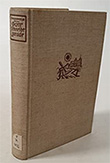
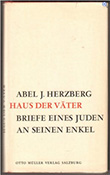
In the period between 1950 and 1970 the publishing house Otto Müller played a special role in Austria, which as a publisher wanted to be an "intermediary of christian-occidental ideology" (Hall, n. d.). The three pillars of the Otto Müller publishing house were: fiction, humanities, and theology. Walter Breedveld's Gott schreibt gerade auch auf krummen Zeilen [God is Currently also Writing on Uneven Lines] stood at the basis of Otto Müller's Flemish and Dutch programmes respectively. The book was an 'enormous' success. Müller alone published four editions. (#Publishers)
Müller also published the only two translations by the equally famous and controversial translator Georg Hermanowski (Link to Hermanowski) in Austria (Du bist wert aller Liebe [You are Worth all Love] by Raf van de Linde in 1956 and Ich war ein Christ [I Was a Christian] by Maria Rosseels in 1959. Rosseels was one of Hermanowski's favourite authors and with the publication of translations by the publishing house St. Benno, which specialised in the publication of confessional literature, also enjoyed a certain success in the GDR in the 1960s.
A special publication by Otto Müller is the anthology Geistige Lyrik des Abendlandes [Spiritual Lyric Poetry of the Occident] in which poems by Bredero, Hooft, Huygens and Vondel were published. No less important is the fact that with Haus der Väter - Briefe eines Juden an seinen Enkel [House of the Fathers - Letters of a Jew to his Grandson] by Abel J. Herzberg in 1967 Otto Müller introduced the author to the German-speaking world.
1970-1990
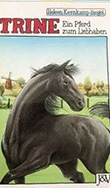
Between 1970 and 1990 a real catch-up process took place in the field of children's and youth literature in Austria. Impressed by the success of Dutch-language children's and youth literature in Germany, translations of the works of Hans de Beer, Miep Diekmann, Margriet Heymans, Harriet Laurey, Els Pelgrom, Lidia Postma, Ingrid and Dieter Schubert, Annie M.G. Schmidt, Joke van Leeuwen, Ida Vos and Tonny Vos-Dahmen von Buchholz now also appeared in Austria (Photo Trine das Pferd).
The publishing house Jugend und Volk even 'discovered' a new author, having been the first to present the work of Heleen Kernkamp-Biegel in the German language area.
Picus
In 1984, the Viennese Dorothea Löcker and Alexander Potyka founded the publishing house Picus. From the very beginning, the publishers focused on diversity, and did so with success! Picus sold its titles throughout the German language area. In 2010, about 70 per cent of the books of the publishing house Picus were sold in Germany, about 28 per cent in Austria and 2 per cent in Switzerland. Next to fiction and non-fiction (including travel literature, contemporary (art) history, architecture and memoirs), children's and youth literature was one of Picus' main focuses until 2005.
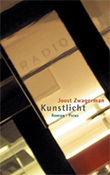
With their translations, Picus not only laid the foundation for Van Loon's success in Austria, but also for a broad dissemination of the author's work throughout the German language area. Der Dieb, vor dem nichts sicher war [The Thief from Whom Nothing Was Safe] was included in the programme of Fischer Taschenbuch-Verlag three years after its publication in Austria, and Der Vampirklub [The Vampire Club], which appeared with Picus in 1997, was re-published as a paperback in Germany a year later by Arena-Verlag in Würzburg.
In line with Picus' plan to draw attention to more authors who had made their mark on the international market with 'marketable yet appealing literature' (Jandl, 2002), two translations by Joost Zwagerman were also published by Picus.
1993-2021
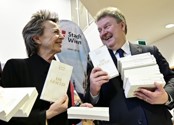
Even though Dutch-language literature is no longer unknown in Austria and the works of Harry Mulisch, Cees Nooteboom, Connie Palmen ('Wiener Gratisbuch des Jahres 2019' [Viennese free book of 2019]) and Margriet de Moor, to name but a few, can also be found in Austrian bookshops, everything seems rather far away, so to speak.
Most of the authors who stayed in Vienna as 'Writers in Residence' (Willem Jan Otten, Stefan Hertmans, Helga Ruebsamen, Leo Pleysier, Monika van Paemel, Doeschka Meijsing, Fleur Bourgonje, Rachida Lamrabet, Peter Buwalda) did not find a their niche in Austria.
The big events organised on the occasion of the 1993 Frankfurt Book Fair (link Buchmesse) (among others an exhibition in the Austrian National Library and lectures by Harry Mulisch in the Hofburg), an event with authors from the Netherlands and Flanders in the Schauspielhaus ('Spuren im weichen Sand') in 2000 and the events organised in the context of the 2016 Frankfurt Book Fair have done little or nothing to change this. (#Fairs)



Publishing houses like Zsolnay (owned by Hanser; with authors like Jan Brokken, Nelleke Noordervliet, Jona Oberski) and Residenz (Mano Bouzamour, Willem Jan Otten, Guido van Heulendonk, Annelies Verbeke and Sien Volders) are doing 'important work', but have not yet been able to follow through.
Dutch literature, especially children's and youth literature, has found a place in Austria, but Austria has not yet become a driving force for Dutch literature in translation. For a breakthrough literature apparently needs real faces, close contacts and long-term exchange, more than traces in the sand.
(Herbert Van Uffelen)
References
Anon.: Theun de Vries - Das Glücksrad. In: Anzeiger des österr. Buch-, Kunst- und Musikalienhandels, Issue: Nr. 19 - Wien, (1950) - p. 38.
Jandl, Paul: Halbe Heimaten, ganze Bücher - Der Wiener Picus-Verlag und sein engagiertes Programm. In: Neue Zürcher Zeitung, Issue: 15. Jan. - Zürich, (2002).
Hall, Murray G.: Otto Müller Verlag. In: Österreichische Verlagsgeschichte, Volume 2, (2016). http://verlagsgeschichte.murrayhall.com/?page_id=385
